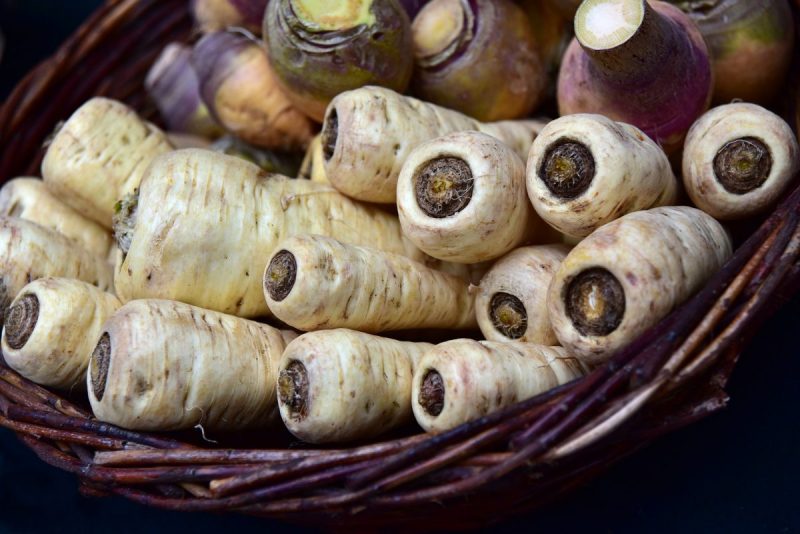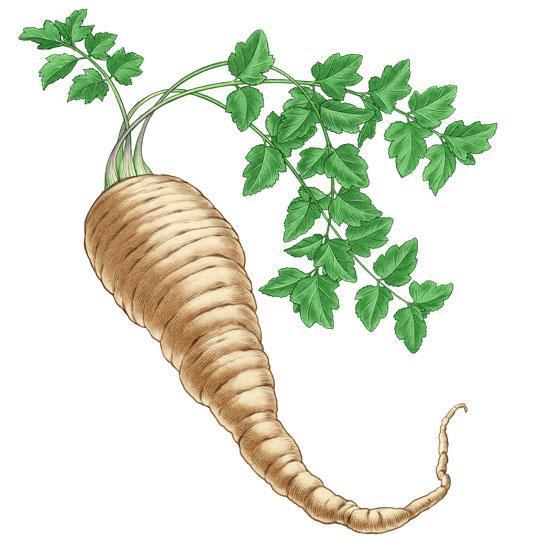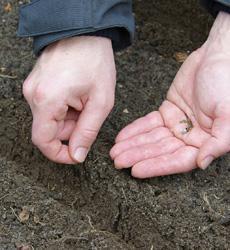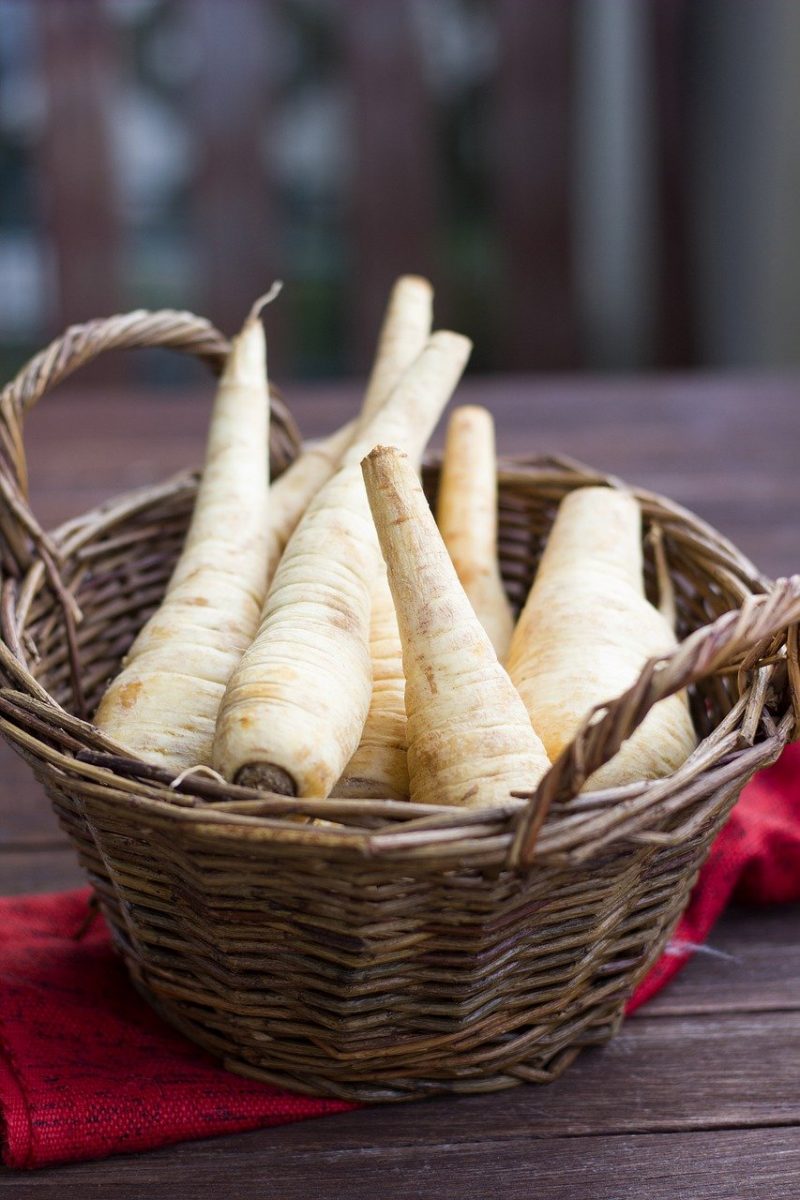Parsnip, information about crop technology

Parsnip (Pastinaca sativa) is a biennial plant, which is cultivated for its aromatic roots, with a specific taste. The roots contain high amounts of protein, carbohydrates, mineral salts, and vitamins and are used in the preparation of some foods and preserves. Parsnip is native to the Mediterranean basin, where it grows spontaneously.
Botanical particularities
The root is elongated, conical, spherical, white-yellowish. Parsnip flesh is juicy, aromatic, and has a pleasant taste. The leaves are petiolate, with large, toothed lobes, shiny on the upper side, and pubescent on the lower side. Because of these characteristics, parsnip leaves cannot be used in animal feed.
Being a biennial plant, it forms the taproot and leaf rosette in the first year and the flowering stalk (reaching 1-2 cm in height), flowers, and fruit in the second year. The flowers form large umbels and are yellow. The fruits are oval and brownish.
Climate and soil requirements
The minimum germination temperature is 1 – 2 °C, and the optimum during the growing season is between 18 and 20 °C. The moisture requirements of parsnip plants are moderate, and the deep root system gives resistance to drought. It is grown on medium, loamy soils with a neutral reaction. In terms of manure fertilization, parsnip reacts well if applied to the previous crop.
Cultivation
Crop rotation
It can be cultivated after vegetables that leave the soil early, leaving it clean of weeds. These are tomatoes, peppers, cucumbers, aubergines, and zucchini. Parsnips can be grown in good conditions after potatoes, peas, or sunflowers.
Soil preparation
It is made in autumn. After removing the preceding crop, you can carry out basic fertilization, after a chemical analysis of the soil. After fertilization, the soil should be mobilized to a depth of 25 – 30 cm. In the early spring, the soil can be fertilized again, after which it must be tilled and leveled. Pre-emergence herbicides can be used to prevent weeds from appearing.
Sowing
It is carried out very early in spring, using a seed rate of 6 – 8 kg/ha, at a depth of 1 – 2 cm, two rows per furrow at 35 cm between them, and a distance of 10 – 12 cm per row. If the seed drill is not equipped with wheels or drums, immediately after sowing, it is recommended to roll the soil to ensure better contact between the seed and the soil.
Recommended products
-
You can find products on a different store
Change Store -
You can find products on a different store
Change Store -
You can find products on a different store
Change Store -
You can find products on a different store
Change Store -
You can find products on a different store
Change Store -
You can find products on a different store
Change Store -
You can find products on a different store
Change Store -
You can find products on a different store
Change Store -
You can find products on a different store
Change Store -
You can find products on a different store
Change Store -
You can find products on a different store
Change Store -
You can find products on a different store
Change Store -
You can find products on a different store
Change Store -
You can find products on a different store
Change Store -
You can find products on a different store
Change Store -
You can find products on a different store
Change Store -
You can find products on a different store
Change Store -
You can find products on a different store
Change Store -
You can find products on a different store
Change Store -
You can find products on a different store
Change Store -
You can find products on a different store
Change Store -
You can find products on a different store
Change Store -
You can find products on a different store
Change Store -
You can find products on a different store
Change Store
Pest and disease control
In general, parsnip is quite resistant to pests and diseases, but problems can occur, especially if crop rotation is not respected. Control is achieved by applying specific fungicide and insecticide treatments.
Weed control
To destroy weeds and to adjust the aero-hydric regime of the soil, it is recommended to carry out 3 – 4 hoeings. Weeds can also be controlled chemically by applying herbicides.
Recommended products
-
You can find products on a different store
Change Store -
You can find products on a different store
Change Store -
You can find products on a different store
Change Store -
You can find products on a different store
Change Store -
You can find products on a different store
Change Store -
You can find products on a different store
Change Store -
You can find products on a different store
Change Store -
You can find products on a different store
Change Store -
You can find products on a different store
Change Store -
You can find products on a different store
Change Store -
You can find products on a different store
Change Store -
You can find products on a different store
Change Store -
You can find products on a different store
Change Store -
You can find products on a different store
Change Store -
You can find products on a different store
Change Store -
You can find products on a different store
Change Store -
You can find products on a different store
Change Store -
You can find products on a different store
Change Store -
You can find products on a different store
Change Store -
You can find products on a different store
Change Store -
You can find products on a different store
Change Store -
You can find products on a different store
Change Store -
You can find products on a different store
Change Store -
You can find products on a different store
Change Store
Care works
Carry out thinning when the plants have developed 2 – 3 true leaves. Make sure that the distance between plants in a row is appropriate. To obtain a high yield, it is recommended to irrigate the crop (3 – 4 irrigations with a norm of 300 – 400 m3/ha), especially during the root thickening period.
To maintain soil moisture, you can apply mulch. The operation consists of covering the soil with plant debris or special foils. Mulching warms up the soil, adjusts soil moisture, maintains a good phytosanitary condition, prevents the development of weeds, and reduces the number of maintenance works.
As the growing season is long, you can carry out 2- 3 fertilizations.
Recommended products
-
You can find products on a different store
Change Store -
You can find products on a different store
Change Store -
You can find products on a different store
Change Store -
You can find products on a different store
Change Store -
You can find products on a different store
Change Store -
You can find products on a different store
Change Store -
You can find products on a different store
Change Store -
You can find products on a different store
Change Store -
You can find products on a different store
Change Store -
You can find products on a different store
Change Store -
You can find products on a different store
Change Store -
You can find products on a different store
Change Store -
You can find products on a different store
Change Store -
You can find products on a different store
Change Store -
You can find products on a different store
Change Store -
You can find products on a different store
Change Store -
You can find products on a different store
Change Store -
You can find products on a different store
Change Store -
You can find products on a different store
Change Store -
You can find products on a different store
Change Store -
You can find products on a different store
Change Store -
You can find products on a different store
Change Store -
You can find products on a different store
Change Store -
You can find products on a different store
Change Store
Harvesting
It must be done in autumn, before the frost. Because they are long, the roots dislocate to a greater depth. After dislodging, the roots should be pulled out by hand, cleaned of dirt, and sorted. Remove those that are wounded or those with disease or pest attacks.


















































































































































































































































































































































































































































